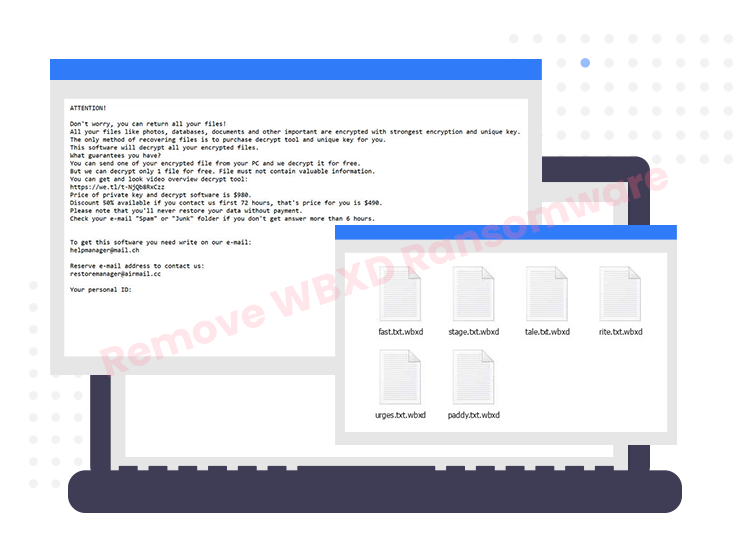
An infection dubbed WBXD ransomware virus has been recently detected to plague computer systems with the goal to extort a huge sum of ransom money from its victims. If you’re curious to learn everything about the WBXD ransomware, then you’ve come to the right place. Read on to know what it is, how you get it, and what to do to protect against it.
What is WBXD Ransomware?
WBXD ransomware is a type of malware, or malicious software, which is designed to encrypt all types of files (audio, video, pictures, important wok documents, etc.) stored on a targeted computer and demand payment for the decryption. According to IT security experts, this new file-encrypting virus belongs to a well-known Djvu ransomware family.
Instead of directly encrypting the user files, it modifies the filenames by appending the “.wbxd” extension. For instance, a file originally named “1.mp3” would appear as “1.mp3.wbxd” – after the encryption.
Following the completion of the encryption process, WBXD ransomware creates two ransom notes in a pop-up window and a “_readme.txt” text file that are put on every compromised folder. These notes simply inform victims about the encryption process. The ransom-demanding message further instructs users to establish contact with the creators of WBXD ransomware via provided email addresses (restoremanager@firemail.cc and helpmanager@mail.ch) – in order to initiate the data recovery process.
If you are a victim of this notorious ransomware-type infection, it is strongly advised to avoid dealing with the cybercriminals because there is a great risk of getting scammed and end up losing both data as well as money.
WBXD Ransomware: Distribution Techniques
Here are some of the most common ways used by attackers to distribute ransomware-type infections to targeted computers.
- Malspam or phishing emails
- Drive-by downloads from a malicious website
- Fake software updating tools
- Exploit Kits
- Third-party downloaders
- Malvertising
- Pornographic and adult content providers
- Peer-to-Peer file-sharing networks (e.g., BitTorrent)
- Exploiting out-of-date browsers and apps
How to Prevent Infections with WBXD Ransomware?
The best way to safeguard your sensitive/ confidential data is to keep ransomware off your device in the first place. To ward off ransomware attacks and enjoy safe browsing, here are some internet safety rules that you need to follow at all times.
- Install a trusted antivirus/ anti-malware software and keep it up-to-date.
- Never subscribe to browser notifications from suspicious or rogue websites.
- Think twice before opening emails from unknown senders.
- Download apps/ programs only from official websites.
- Back up all important files to external storage devices (e.g., USB flash sticks).
- Never use public Wi-Fi networks.

